.
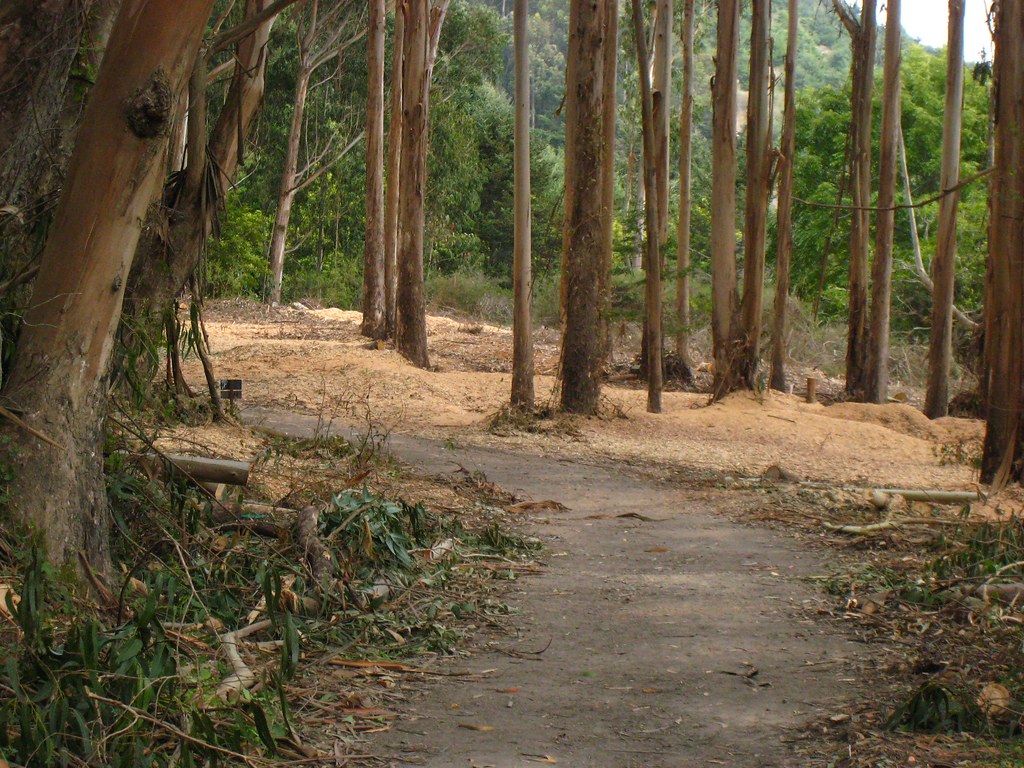
Fields of Sawdust (Bolinas): photo by blmurch, 15 September 2007
The plum-lacquered woven Japanese basket Phil
.........lately back from Kyoto gave us,
....................Juliet’s baby bed on Nymph & Cherry
The year Phil dwelt over on Larch with Don
Beyond the shimmering silver dollar eucalypti,
Sometimes strolled two dirt road blocks to visit,
People mad at him if he came over, if he didn’t
..............................
Toting his laundry downtown, two sad sacks.
Later on camped down on Terrace tender
.............dear heart crotchety and alone
In the same town with the vivacious Muse
Not quite on the outs & not quite on the ins w/ her,
..............................
..............................
One day on acid sternly informed me, Thomas Clark,
Poetry will never get written this way.
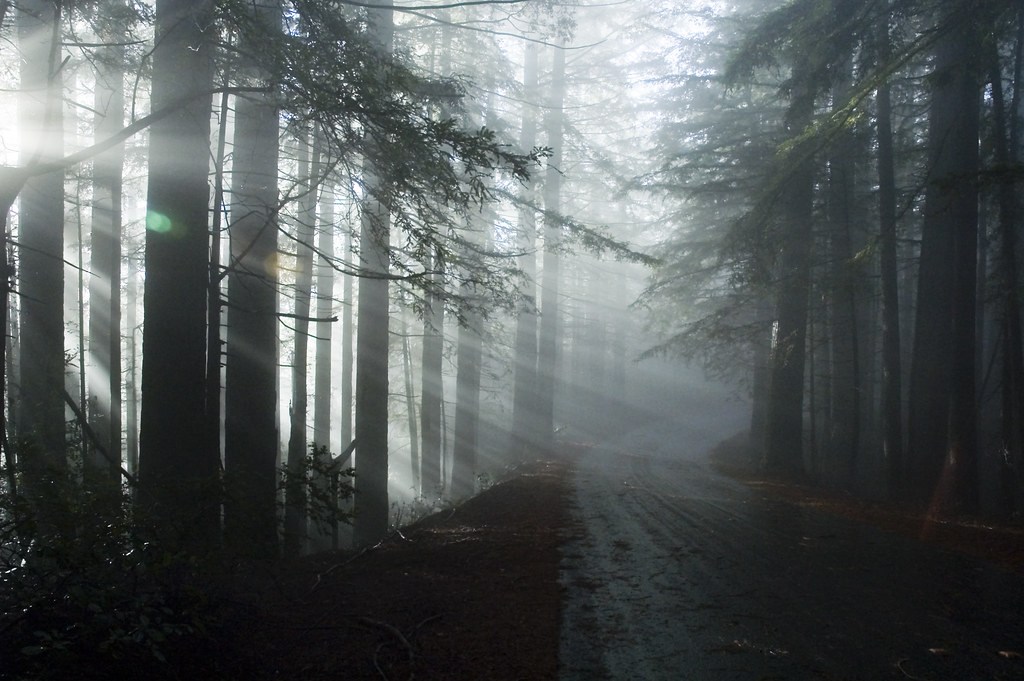
Bolinas Road: photo by CrayonAgent (Wouldbe Orange), 24 December 2005
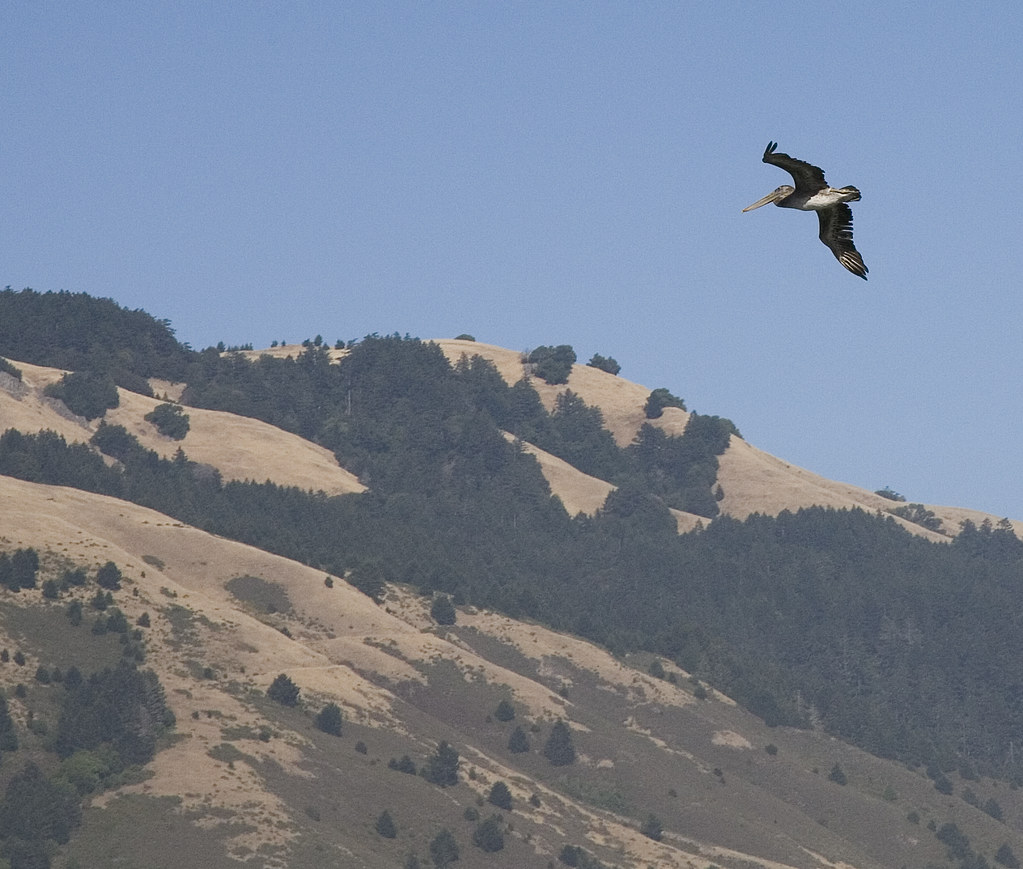
Lone pelican (Mt. Tamalpais, from Bolinas Beach): photo by Yana Murphy (edwinsail), 24 July 2007

Eucalyptus sideroxylon, leaves, stems, petioles, branches, buds & capsules: photo by HelloMojo, 2007
Tropaeolum majus
(nasturtium), Jeondeunsa, Korea: photo by Dalgial, 15 September 2008
Tropaeolum majus
(nasturtium), Jeondeunsa, Korea: photo by Dalgial, 15 September 2008

Tropaeolum majus
(nasturtiums): photo by Kristel Hayes (Kristel Mesh), 3 October 2012

Notebook entry, c. 1967: Philip Whalen (Bancroft Library, U. of California)

Clouds over Bolinas Lagoon: photo by Tim Porter (Oaxoax), 1 March 2006
i.m. Philip Whalen 1923-2002
Find twenty beautiful pages for Thomas Clark.
.............("Anything!", Joanne Kyger said. "I'd write anything that I could!")
Philip Whalen: from October First (1-7:x:71)
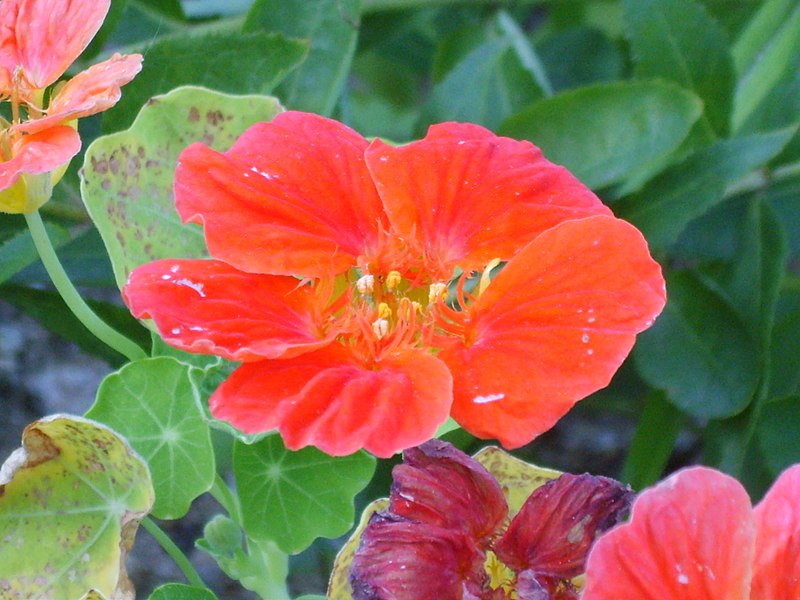
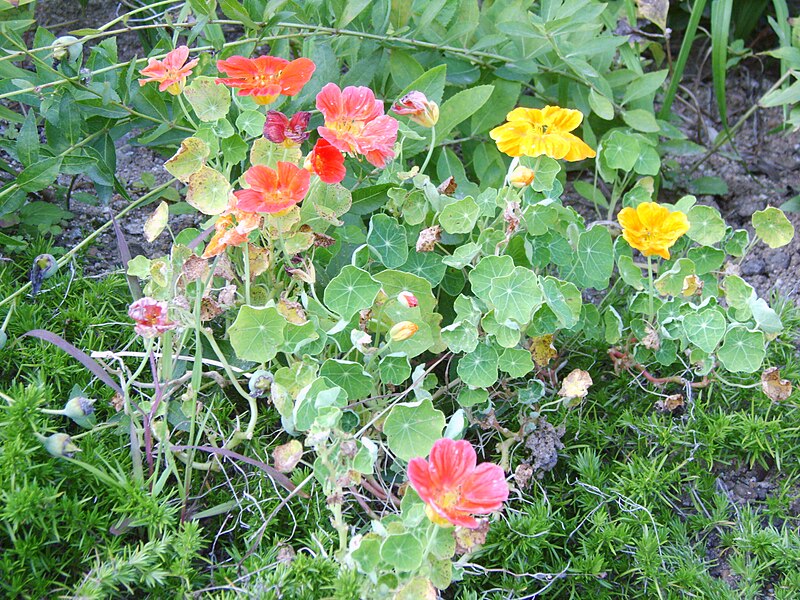



18 comments:
Tom,
Thanks for all of this, including --
22 "The days & hours of my life are passing
X faster & faster."
67
(almost 45 years later to the day, it's still the case)
10.15
grey whiteness of fog against invisible
ridge, bird slanting from right to left
in foreground, wave sounding in channel
once more forgetting a kind
of concealment, event
at top left, moments at top
center, in particular
line of fog against sunlit green ridge,
pelican flapping across toward horizon
How altogether beautiful this is, Tom.
“impatient amid nasturtiums . . .”
serene in the light-shot forest
moving (or not)
at the speed of truth
(it’s an illusion, either way)
simply there,
present,
beneath cloud rivers
amid good days and bad days
tripping
into poetry,
the bodhisattva
works and returns.
So fresh the lookout
crunchy snow refreshes
on the dark road
I'm glad of the visit
it told me a story.
Threads.
Nasturtiums--not only beautiful (as this poem is) but (I wonder if Phil knew) also tasty, as their flower buds can be picked and eaten as "false" capers.
nice eucaliptus fragance...the flower "Tropaeolum majus" has several names in spanish: ... capuchina, taco de reina, espuela de galán, flor de la sangre, llagas de Cristo, marañuela, mastuerzo de Indias o pelón...
"beneath cloud river"
it is endless
this flyway
to warmer regions
mapped by stars
sensed somehow
along the river
travelers many
their loud sounds
Eucalyptus
What color fresh breathing--
on the way to healing
all the aches and pains
piled up like mountains
upon thoughts upon thoughts
North American high country trek
finds sadness bright
and two dimensional
flatness--hope hopeful
accept the beautiful now
lucky lucky star sun.
Their seeds are hard to plant.
They don't take kindly to rich soil
prefer the poor not fussy with fertile
but show it in their blooms
unreal bursts
sneeze
They like it hot.
Water is o.k. but not the thing
they want.
It is the sun
and the others
watch how round
inside how dark
that ear ready
for action.
I like how "Phil Whalen in Bolinas" looks. I like the look of the lines drifting off with afterthoughts attached to them, almost as if there is not enough time to catch up to the poem or what it is saying, almost like a tag-along. Thomas Clark humbly puts himself in that position but I wonder who was the leader, really?
dear heart crotchety and alone
This nearly still point ("crotchety" ruffles the air a bit) at the heart of a spray of memory. Wonderful.
There is nothing so precious as a bit of local knowledge.
Capuchin, taco queen, spur gallant, flower of blood, wounds of Christ, nasturtium, cress or hairless pig ...
Not surprising that Sandra's list of names for nasturtium should be very much like a poem. Nasturtiums are native to Central and South America, were known among the Incas for their medicinal qualities, and are still employed as an herbal remedy in places lacking the dubious luxury of chain-store pharmaceuticals. Ingested, they are said to be good for a chest cold and for promoting the formation of new blood cells.
(The bad chest cold I've had the past two weeks is crying out at this moment for a strong brew of spur-gallant tea.)
In Sandra's native land, Chile, a tender species of the genus called Tropaeolum azureum sports flowers in an intense shade of blue. What wonders the world holds.
"Tropaeolum, commonly known as Nasturtium (literally 'nose-twister' or 'nose-tweaker'), is a genus of roughly 80 species of annual and perennial herbaceous flowering plants. It was named by Carl Linnaeus and is the only genus in the family Tropaeolaceae. The nasturtiums received their common name due to the fact that they produce an oil that is similar to that produced by watercress (Nasturtium officinale).
"The genus Tropaeolum, native to South and Central America, includes several very popular garden plants, the most commonly grown being T. majus, T. peregrinum and T. speciosum. The hardiest species is T. polyphyllum from Chile, the perennial roots of which can survive underground when air temperatures drop as low as −15 °C (5 °F).
"The first nasturtium species was introduced into Europe in the 18th century and was named Tropaeolum minus by the Swedish botanist Carl Linnaeus. He chose the genus name because the plant reminded him of an ancient custom. After victory in battle, the Romans used to set up a trophy pole called a tropaeum (from the Greek tropaion, source of English "trophy"). On this the armour and weapons of the vanquished foe were hung. Linnaeus was reminded of this by the plant as the round leaves resembled shields and the flowers, blood-stained helmets.
"Nasturtiums were also known as "Indian cress". This was because, when they were introduced they were used as a salad ingredient and they originated from South America which at that time was known as the Indies. The 16th-century herbalist John Gerard, in his work "Of the Historie of Plants", called the plant "lark's heel". He wrote: "unto the backe part(of the flower) doth hange a taile or spurre, such as hath the larkes heele, called in Latine Consolida regalis." (He was referring to the forking larkspur (Consolida regalis)."
The plant's uncommon ecology -- adaptability to cool, often moist, shaded ravines, intermittent streams -- proves ideally suited to the North Coast of California, in particular the SF Bay area.
In the decade we spent in Bolinas we found the soil unsuited to many common plants, but how the nasturtiums loved that soil -- a seed popped into the hard infertile ground returned bravely to the light as a hardy, spreading tangle of wonderful bright red and yellow flowers.
But lest I forget -- Steve -- (this is your sacred precinct!) -- thinking of Bea Murch's top photo here -- you've encapsulated what's happening there, and here, with:
event
at top left, moments at top
center,
not to mention that lonesome bird
against sunlit green ridge,
pelican flapping across toward horizon
(And Vassilis -- you know you've come to the right place for false capers, here!)
And Susan puts it beautifully as to the democratic nature of the nasturtium, with its wild gifts --
They don't take kindly to rich soil
prefer the poor not fussy with fertile
but show it in their blooms
unreal bursts
And while we're still here... equal time for the eucalypti.
The bit of land on which the small inhabited hamlet of Bolinas is perched has its own particular geological history and while unconducive to many common California plants, is uniquely favorable to certain exotic species. Among these is the eucalyptus, which grows more readily there than anywhere on the planet outside Australia.
The circumstance this poem describes dates from the period 1970-1971, when Philip, in those years impoverished and itinerant, camped for some months in Bolinas houses lent by generous friends. The house on Larch was owned by Don Allen, the distinguished editor and publisher, an early and longtime champion of Philip's poetry.
In those years we lived a stone's throw away, on a jagged escarpment at land's end just above Duxbury Reef. The barren patch of land on which our tiny cottage was located was treeless. I planted a number of baby eucalypti. This was barely forty years ago. We've never gone back. But last year someone prompted me to take a look on Google Earth. Those baby eucalypti have now grown into majestic hundred-foot high trees.
We lived near the junction of Nymph and Cherry. Yes, those were really the names of the dirt roads. (Another lifetime, another world.) Philip strolled over to visit quite often. It was in this period that he bestowed upon us the plum-lacquered wicker basket from Kyoto which thus became our infant daughter's bed.
The nearest (indeed only) laundromat was downtown. Like us, Philip had to get around on foot. Toting that one sad sack of laundry downtown was a burdensome chore for him. Sad-sack labours like that tend to go unnoticed by people who drive cars.
Back then, there actually existed conscious adult beings who did not drive cars. Now, not so much.
And speaking of cranky... The "crotchety" reference in the poem -- "tender/ dear heart crotchety and alone" -- which WB accurately locates as near to the heart of the matter here, has caused some consternation among those who did not get to know Phil until later years, when he had found a secure and relatively comfortable home in the protective circumstance of the SF Buddhist community.
(The mendicant life of a lonely and penurious poet may seem romantic to those who haven't lived it. My impression was that for Philip, who always appreciated the finer things, there was never any romance in it at all.)
Tom,
Thanks for further notes on "the circumstance this poem describes." I often used to walk by Don Allen's house on my way back from leaving my car at Allen Maxey's (just a block away on Larch) for whatever work it might have then needed. Those alphabetical names of still dirt roads on the gridded Mesa (Alder, Birch, Cedar, Dogwood. . .). Maybe it's time to ride bike over to Nymph and Cherry to see what those eucalyptus trees are up to these days.
yes...it is a very adaptable plant ...I have it in my backyard...some years it does not grow too much ...I have almost forgotten about it and then it is there again...it grows generally under other plants and it has very long stems that become intricate
"used to walk by Don Allen's house..."
My goodness--I wonder what thoughts came through as you passed by--too bad there wasn't enough room for everyone inside.
Post a Comment